New galleries dedicated to ancient Egypt, East Asia and ceramics opened at the National Museum of Scotland in Edinburgh last week, as the celebratory conclusion to a 15-year redevelopment project. Centring on some of the museum’s most impressive and popular holdings, including the only known example of an ancient Egyptian double coffin, the three galleries are the last of 29 to be opened in the course of an £80 million transformation.
By repurposing previously underused spaces, and undoing alterations made in the 20th century, the project has both modernised and restored the building, which first opened in 1866 as the Edinburgh Museum of Science and Art. Gordon Rintoul, who began the project shortly after taking over as director in 2002, explains: ‘The building had in many ways lost its way, it wasn’t clear what it was about and it needed to be brought up to date. So we set out to restore the museum to its original glory: we opened up archways that had been bricked up and restored sightlines that had been lost over the years. In fact we realised that the building itself was the biggest item in the collection.’
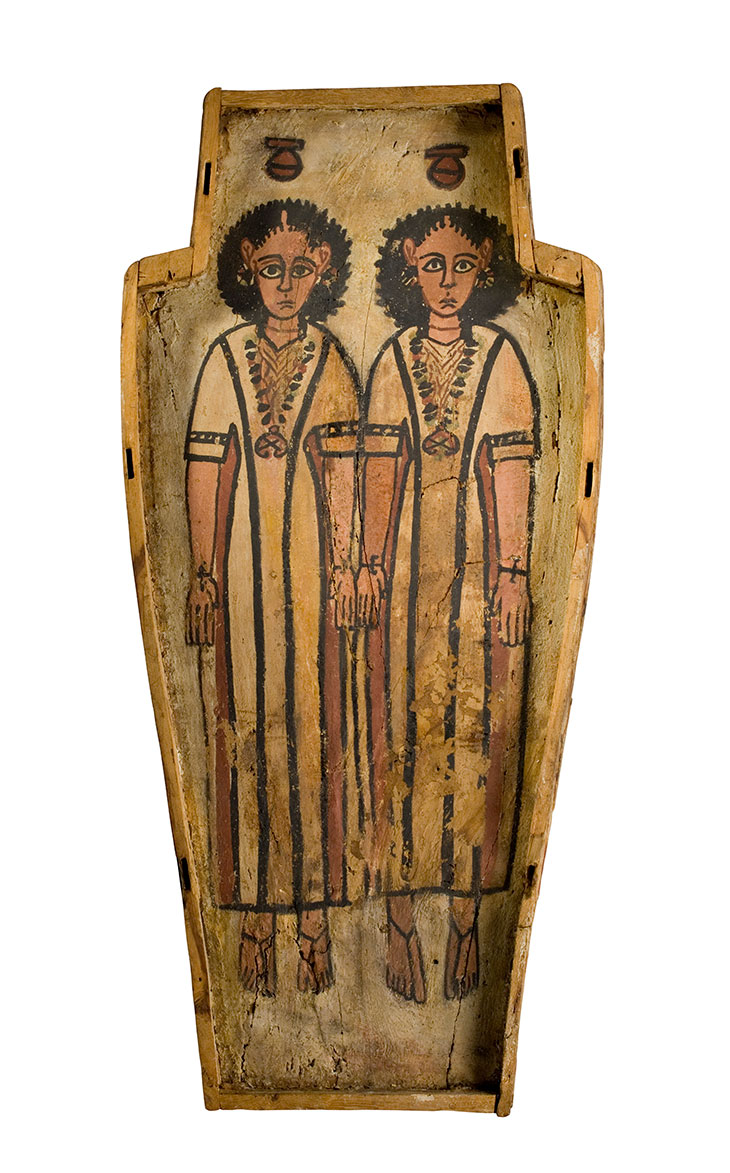
Double coffin from Thebes, Roman Period. National Museums Scotland
A major reassessment of the museum’s collections took place as part of the refurbishment, prior to which some displays had not changed in 70 years. The opportunity to engage with the collections and to reflect on the museum’s purpose has taken the institution back to its Victorian roots, explains Rintoul. ‘The first director of the museum, George Wilson, said that what he wanted to do was create a museum of the world in relation to Scotland, and really that’s what we’ve done. Our collections here are hugely broad-ranging, covering everything from science and technology to the natural world, to art and design, to cultures across the world – so giving people the opportunity to explore the whole world under one roof became a central theme.’
In the airy Grand Gallery, its combination of glass and cast-iron pillars inspired by the Crystal Palace in London, the new ceramics displays highlight links between Scotland and the wider world. Examples of drinking vessels from ancient Scotland, and an early 19th-century ‘puzzle jug’ traditionally used in drinking games, sit alongside a Japanese water jar and a container from Egypt, encouraging visitors to make cross-cultural connections.
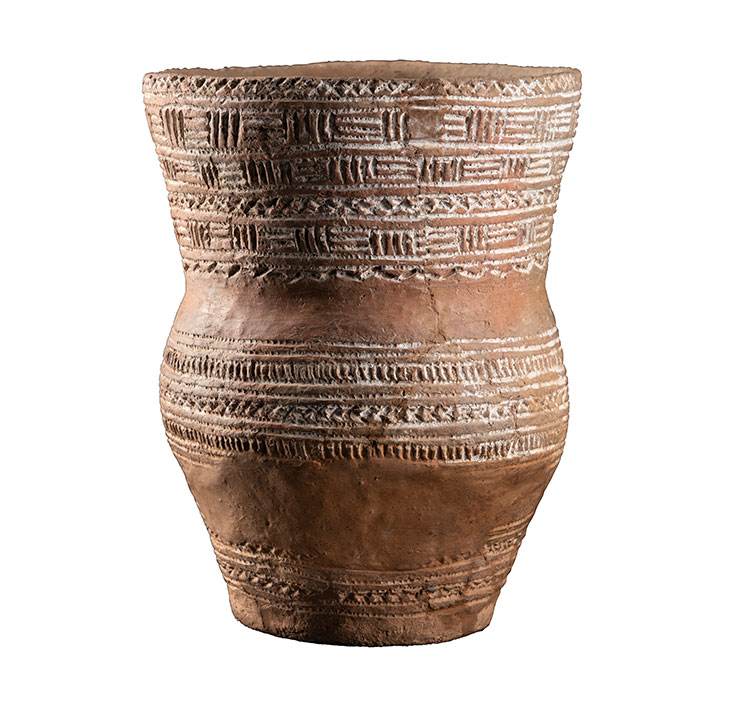
Beaker (2400–1800 BC), Dairsie, Fife. National Museums Scotland
The East Asia gallery emphasises the common origins of Chinese, Korean and Japanese cultures, before exploring each in more detail, while the ancient Egyptian gallery connects its displays to the history of Scottish archaeology and Egyptology. A casing stone from the Great Pyramid of Giza is the only one on display outside Egypt, and was brought to Scotland in the 19th century for Charles Piazzi Smyth, the Astronomer Royal of Scotland, whose survey of the Great Pyramid in 1865 remains definitive some 150 years later.
Some of the museum’s greatest objects were excavated by the pioneering Scottish archaeologist Alexander Henry Rhind. They include a funerary canopy, and other objects from the tomb of the Roman-era official Montsuef and his wife Tanuat, the earliest ever Egyptian tomb to be systematically excavated and recorded. About 40 per cent of the objects in the ancient Egyptian gallery are on display for the first time in a generation, but perhaps most remarkable is the extent to which objects are connected to known individuals. Visually engaging displays combine with informative text panels and interactive screens to elucidate the lives of those who made and commissioned, and then excavated the objects, which range from grave goods to palace objects and a cast of the Rosetta Stone.
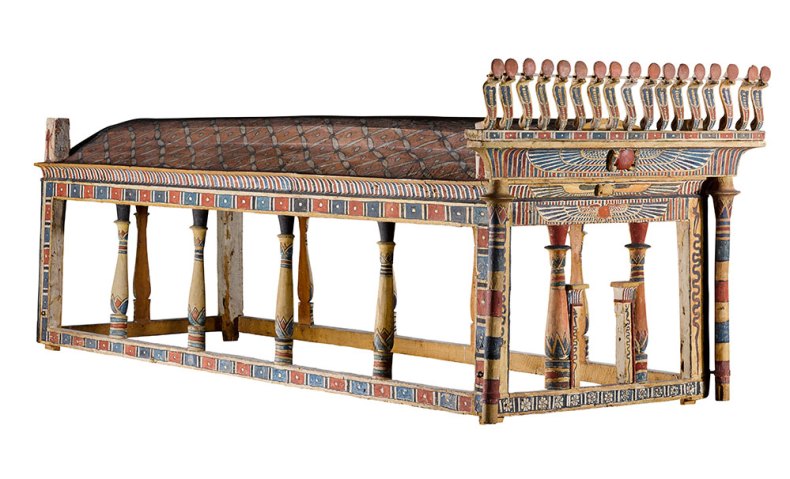
Canopy from tomb of Montseuf (c. 9 BC), Thebes. National Museums Scotland
Other texts and displays survey 4,000 years of ancient Egyptian culture. The double coffin for two infant boys, dating from 175–200 AD, was previously on public view but new display cabinets allow it to be seen up close and in the round: both the exterior, painted with images of the boys, and the interior, depicting two figures of the sky goddess Nut, can be seen unimpaired. John Giblin, keeper for the department of world cultures at the museum, explains that the glass cases were made in consultation with curators and designers, with the aim of ‘creating something unique, to have a different kind of display. Although of course we have to display objects in cases for security and conservation reasons, we wanted to make them unobtrusive so that people can get as close to them as possible.’
The effect can be stunning: a suit of samurai armour makes an impressive centrepiece for the East Asia galleries, and is the focus for an exploration of Japanese warfare and social structure. The 18th-century suit has been put on display for the first time having been discovered in a box in storage. Though extensive conservation work was done to stabilise the armour, conservators were astonished to find it well-preserved, with its many silk components still extant.
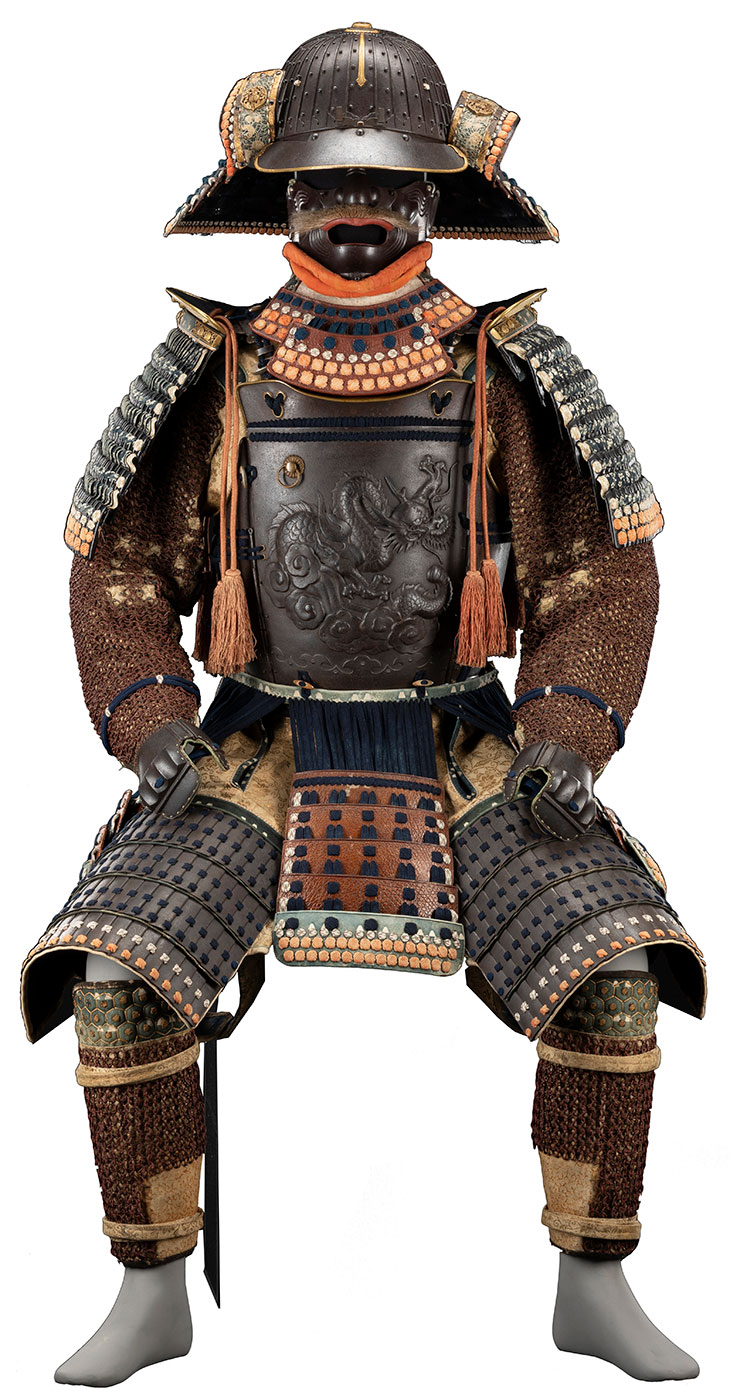
Samurai armour (early 19th century), Japan. National Museums Scotland
If an institution’s success is to be judged by visitor figures, the National Museum of Scotland can consider the redevelopment a job well done: the number of visitors has nearly trebled since the redevelopment began. Rintoul emphasises the scale of the figures, saying: ‘We’ve got to bear in mind that in a city of 500,000, in a country of five million, 2.3 million [the recorded attendance figure for 2018] is an enormous number of people per annum.’
The redevelopment, which is unusual in having been completed on time and within budget, has clear benefits beyond boosting the museum’s place on the Scottish tourist trail. The discovery of many objects that had been languishing in storage has provided fruitful material for research, and alongside a new commitment to regularly rotate displays, a programme of touring exhibitions will ensure that this remarkable multidisciplinary museum can extend its reach still further.
Unlimited access from just $16 every 3 months
Subscribe to get unlimited and exclusive access to the top art stories, interviews and exhibition reviews.

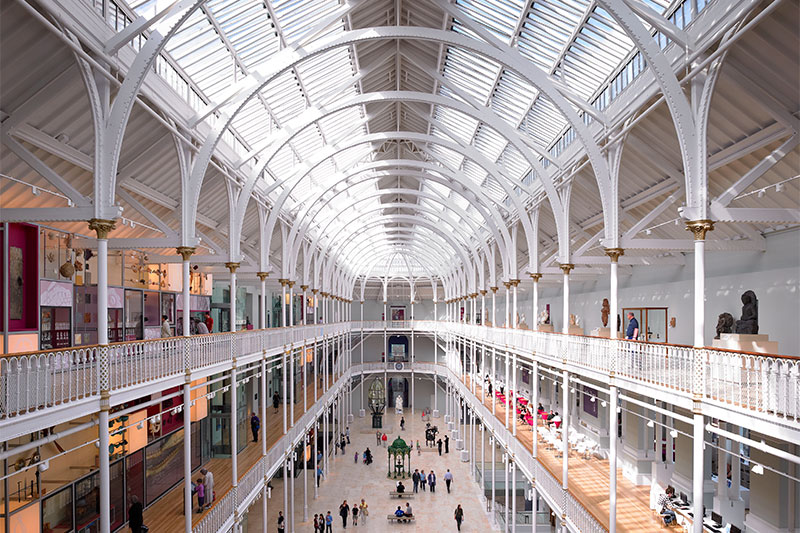
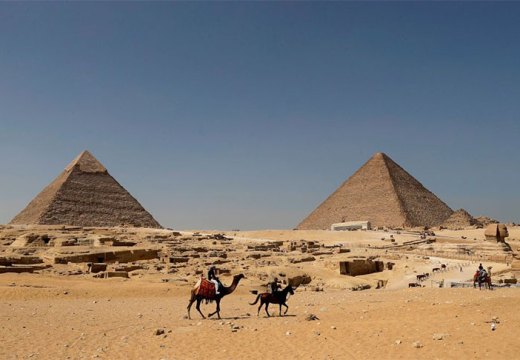
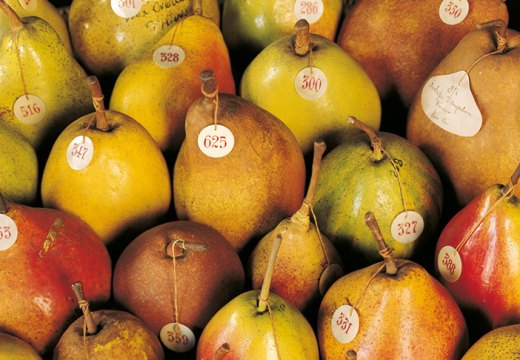
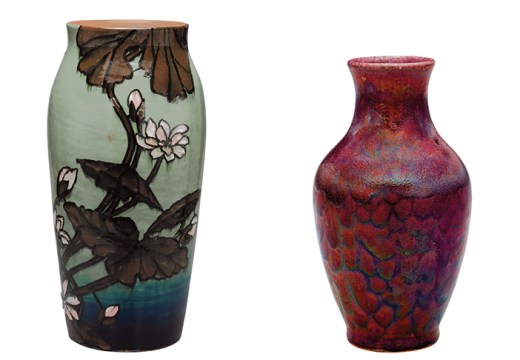









![Masterpiece [Re]discovery 2022. Photo: Ben Fisher Photography, courtesy of Masterpiece London](http://www.apollo-magazine.com/wp-content/uploads/2022/07/MPL2022_4263.jpg)
It’s time for the government of London to return to its rightful home